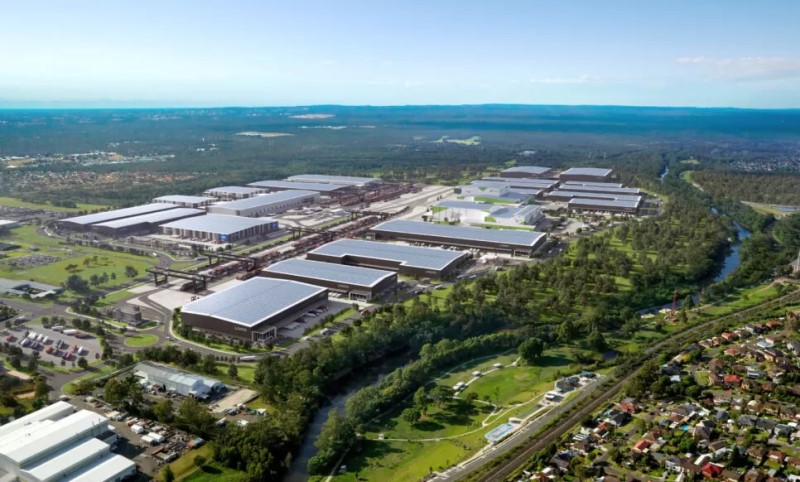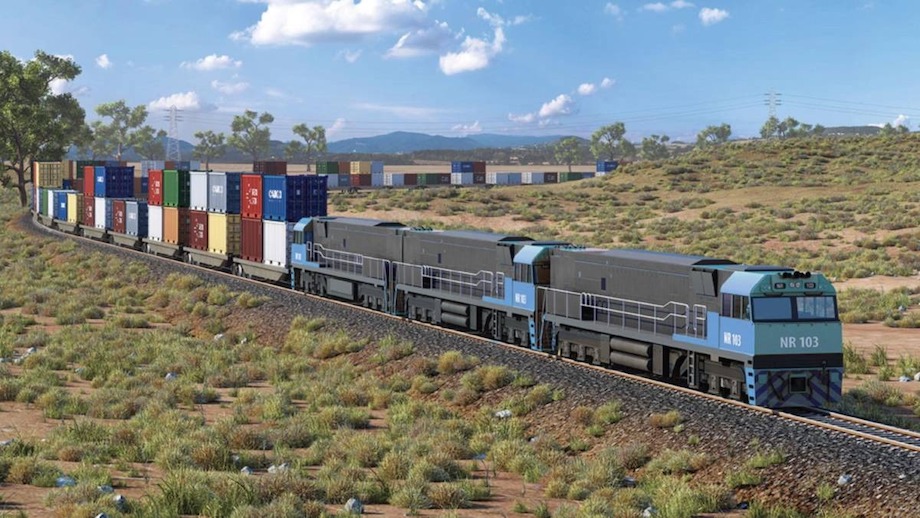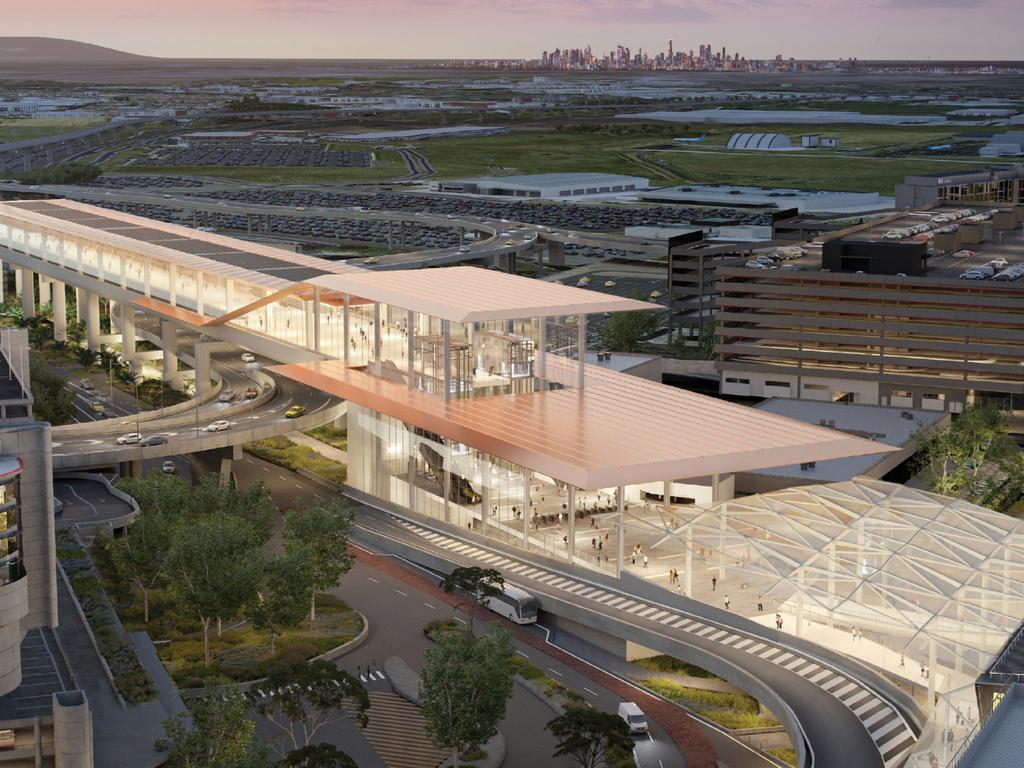Australia’s first independent metropolitan interstate terminal has opened as part of the Inland Rail project.
The Interstate Terminal, part of the Moorebank Intermodal Precinct, Australia’s largest logistics hub and the Inland Rail project, was launched on April 4.
It is a joint venture between the Federal Government’s National Intermodal Corporation, Qube Holdings and developer LOGOS. The government tipped $570 million into the project.
Federal infrastructure, transport, regional development and local government minister Catherine King said that the project was a key part of the Inland Rail project to connect freight lines across the country.
“The new Interstate Terminal connects the Precinct to the interstate rail and road network—including the future Inland Rail project—enabling movement of vital consumer goods between Melbourne, Brisbane, Adelaide and Perth,” King said.
The terminal is operating under an agreement for open access with no single rail operator in charge, according to National Intermodal Corporation chief executive James Baulderstone.
“The Interstate Terminal has an open access arrangement that allows multiple rail operators to use the terminal, driving competition and delivering further cost savings to end users,” Baulderstone said.
“The precinct’s scale also provides the platform and location for major renewable energy generation, enabling warehouse owners and last-mile delivery transport companies to reach their net zero ambitions.”
According to the government each of the 1800-metre-long trains that can use the terminal is equivalent to 100 B-double trucks. Each train will be able to move 500,000 6m (20ft) containers.
The project is aimed at easing congestion and help with efficiency and competition across the country’s freight network, Prime Minister Anthony Albanese said.
“The new terminal will play an important role in improving travel for Sydneysiders, taking more than 3000 heavy trucks off Sydney roads daily,” Albanese said.
There will be more than 850,000sq m of industrial warehouse space and more than 6,800 jobs created as part of the precinct.
It will also house Australia’s largest rooftop solar panel installation, capable of generating more than 100MW of renewable energy.
Federal finance minister Katy Gallagher said the terminal’s location at the Moorebank Intermodal Precinct was key to boosting jobs and the economy by making logistics easier.
“Together with the terminal’s strategic location, with direct connections to Port Botany, the M5 and M7 motorways, it offers unrivalled logistics benefits for industrial customers and consumers,” Gallagher said.
“Moorebank Intermodal Precinct is Australia’s largest logistics hub.”
▲ An aerial view of the Moorebank Intermodal Precinct where the Interstate Terminal has opened.
Qube Holdings managing director Paul Digney said there were other benefits apart from boosting the share of freight that travels via rail along the eastern seaboard from its current level of 11 per cent.
“Getting more freight off the road and onto rail will be key to achieving Australia’s emissions reduction targets, especially given rail freight generates 16 times less carbon pollution than road, and this new Interstate Rail Terminal at Moorebank will be a key enabler in that transition,” he said.
Work is continuing on other aspects of the Inland Rail project with tracks lowered and bridges raised at 12 locations in Victoria to allow double-stacked freight trains to pass safely.
The Australian Rail Track Corporation Inland Rail (ARTC Inland Rail) has chosen McConnell Dowell to build the first four projects of Tranche 1 at Barnawartha North, Glenrowan, Wangaratta and Seymour.
Construction contracts will be awarded for the other eight sites in mid-2024 with construction scheduled to begin in early 2025.
In Victoria, $45.1 million has been spent on the project with 196 local businesses and 662 jobs created. 
▲ The Inland Rail Freight Corridor, along with Snowy 2.0, top the nation’s largest infrastructure projects.
Meanwhile, the Federal Government is investing in a trial to retrofit a diesel-electric freight train with batteries.
Aurizon, Australia’s largest rail freight hauler, is developing a 1.8 MWh battery-electric tender (BET) for a diesel-electric locomotive with $9.4 million from the Australian Renewable Energy Agency.
The aim is to test if heavy haulage and general freight routes can be used with a train utilising battery technology.
Aurizon has partnered with Alta Battery Technology, who will design and build the BET at Aurizon’s Townsville facility before being trialled on an Aurizon customer haulage route.
It is estimated that the BET, if successful, could provide up to 50 per cent of the required power on certain commercial haulage routes, helping to decarbonise the routes.
The BET will be charged with renewable energy to further help with decarbonisation.
A battery-electric locomotive would then be the next step to replacing diesel on haulage routes.
With projects such as the Inland Rail under way, decarbonising the routes will be vital as more freight is delivered via rail.
The Federal Government has drawn up a sector-wide plan to reduce emissions and use out-of-the-box solutions for cleaner transport—the Transport and Infrastructure Net Zero Roadmap.
“Most of the emissions from railway freight come from the consumption of diesel, so this trial is an important first step to decarbonise our freight rail system and shows the importance of government and industry working together to find the best ways to meet our net zero target,” King said.
“Decarbonisation of the transport sector is a priority for the government and innovative solutions such as the one being trialled by Aurizon will help deliver cleaner transport in Australia.”
Aurizon currently runs more than 600 trains, transporting 250 million tonnes of goods across the country.
Source: The Urban Developer

